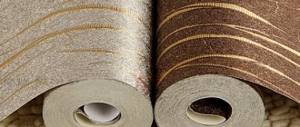Author: Andrey Fedorov
Last updated March 18, 2020
- 1 Convection heater - what is it and how does it work
- 2 Convector type electric heater
- 3 Gas convector heater for home
- 4 Water convectors
- 5 Types of thermostats used on convector heaters
- 6 How to choose a convector for your home and garden
- 7 Rating of the best models of envelope heaters in 2020
- 8 Video: How to choose convector heaters
Convection heater - what is it and how does it work
A convection heater is a technical device that is an element of a heating system that uses the principle of convection of air masses in its operation.
FOR YOUR INFORMATION!
Convection is a process that occurs in air or another medium when, when heated, warm layers rise and cold layers fall. This creates a natural circulation, a circulation within the volumes of a certain enclosed space.
Natural convection occurs quite slowly, so to warm up the room faster, forced convection can be used, created by using a fan. Different models of convector heaters differ in overall dimensions and installation methods, technical characteristics and types of primary energy used: electricity, gas and heating system coolant. The operating principle of heaters of this type is shown in the following figure.
Pros and cons of using
Any technical device has certain advantages and disadvantages that determine the possibilities of its use and demand among users. For convector type heaters, the advantages are the following:
- environmental Safety;
- a variety of models and designs by type of execution, type of fuel used, as well as overall dimensions and technical characteristics;
- quiet operation, with the exception of models using forced circulation;
- there is no combustion of oxygen during operation;
- possibility of use in automatic mode;
- long service life;
- energy efficiency – if there is a thermostat.
Among the disadvantages of this type of equipment, the following indicators should be noted:
- the difficulty of repairing at home;
- slow heating of the heated room, in the absence of a fan in the design of the device;
- noise from a running fan in models with forced convection.
Advantages and disadvantages
Convectors have an impressive list of advantages , the main ones being:
- during operation, the convector produces heating only the air space (excluding infrared radiation), without heating objects;
- regarding installation and use, simple and convenient;
- For installation, you only need to attach the convector to the wall or place it in a convenient place and plug it into the network;
- the heating process occurs in a short period of time;
- the devices are characterized by a high level of heat transfer;
- safe during use;
- There are no risk factors for such devices, they do not explode, do not heat up, and do not emit any harmful or toxic substances;
- As for electrical safety, it is also at a high level;
- refers to environmentally friendly devices;
- during their operation there is no air pollution;
- are absolutely silent during their operation;
- are characterized by high efficiency indicators, which means that you won’t have to throw away money for the operation of the convector;
- Almost all models are small in size, which ensures ease of installation and use;
- During the process of heating the air masses in the room, the level of air humidity is maintained. Oxygen is not required for the device to operate;
- characterized by durability and reliability;
- by equipping it with a thermostat, it is possible to control the temperature and adjust it at your discretion;
- When a certain room temperature is reached, the device automatically turns off. You can set the temperature threshold yourself;
- the above advantage provides not only the creation of comfortable conditions, but also makes it possible to save energy. If the air temperature in the room drops to the specified level, the device turns on spontaneously and continues its operation;
- There is no need to wait for some time to start the heating process. Heating begins to occur immediately after the device is plugged in;
- the device body has a stylish and modern design that fits into any interior;
- the price of energy-saving convector heaters for home varies from 1500 to 5000 rubles, and is very affordable;
- Once installed, the equipment does not require maintenance or monitoring. It is only necessary to occasionally wipe it from dust with a slightly damp cloth.
As for the disadvantages of the device, there is an opinion that the devices consume a large amount of electricity for their operation. However, this is not entirely true, because if you take into account all the nuances and features of a particular model and choose the right one for the room, then energy costs will not be noticeable.
Convector type electric heater
The most common type of heaters of this type are models that use an electric heating element in their operation and operate from a household electrical network with a voltage of 220 Volts.
Electric convector device
The main structural elements of the electrical device are shown in the following figure:
- an external panel equipped with grilles that allow you to regulate the direction of heated air flows;
- closed heating element (TEH);
- control and automation unit, which includes a temperature sensor and thermostat, as well as control elements.
Design of an electric convector heater
The number of automation and protection devices on different models may vary. In addition, the device circuit may include a fan to provide forced circulation and several heating elements.
Operation of electric models
When using electric heaters, you must follow safety rules, which can be formulated as follows:
- The outer panel of the device, especially the grilles that provide air circulation, must not be covered with foreign objects (clothing, bedding, etc.).
- Do not wet clean the working surface of the device while it is in use.
- During the heating season, it is necessary to clean the interior of the heater from dust at least twice.
- Do not use devices with damaged wires and plug connections.
- The heater body must be grounded, for which an electrical network with 3 grounding contacts is used.
Which electric convector is better by brand?
Electric models are produced in different technical countries around the world. In our country, the most popular brands are:
- Ballu is a transnational corporation headquartered in China (Taiwan), specializing in the production of climate control equipment for various purposes.
- Noirot is a French company specializing in the production of electric heaters and is the largest manufacturer of convector-type models.
- Electrolux is a well-known Swedish brand, under whose brand a large number of models of household appliances of various types are produced.
- Timberk is another company headquartered in Sweden, specializing in the production of thermal, water heating and climate control equipment.
- Neoclima is a brand created by Russian and Ukrainian founders with head office in Moscow and production facilities in China. The company specializes in the production of climate control equipment for various purposes.
How to choose an electric convector
When choosing an electric convector, the main criteria will be the following indicators:
- electrical power - determines the device’s ability to provide heating to a certain area;
- the presence and type of thermostat (mechanical, electronic) – determines ease of use and the ability to operate in automatic mode;
FOR YOUR INFORMATION!
For using heaters in automatic mode on an ongoing basis, models with electronic control are most suitable, and for periodic use, it is more profitable to choose devices with a mechanical type of thermostat.
- type of convection (natural, forced);
- the presence of protection and safety system devices - against the entry of foreign objects into the internal space and short-circuit modes of electrical networks;
- type and number of heating elements used;
FOR YOUR INFORMATION!
Monolithic type convectors, in which the heating element is placed in a poured slab, are distinguished by their reliability, long service life and the ability to retain heat for a long time when disconnected from the electrical network.
- external design and body design;
- type of execution – floor, wall;
- the presence of additional functions: anti-freeze and on timer, remote control and work according to a given program;
- Reliability of use is guaranteed by the manufacturer's brand.
Basic principles of convector operation
The operation of a convector heater is based on a simple physical phenomenon, known to the average person from a school physics course. Warm air tends to rise, while cold air tends to sink. Due to natural air circulation, the volume of the room is heated when using convector heaters. To understand how a convection heater works, you do not have any special knowledge - the method is so simple. At the bottom there is a heating element, a heat exchanger. To increase the contact area of the heating element with air, it is equipped with flat metal ribs, which at the same time serve to direct the flow of warm air. The heating element is covered with a metal casing. Based on the type of energy consumed and design features, we divide convectors into:
- electrical;
- water;
- gas.
There are holes cut in the upper and lower parts of the convector casing through which cold air enters the housing and hot air exits out. The casing does not come into contact with the heating element, the convector body does not heat up much like the body of oil or water radiators.
In domestic conditions, electric convector heaters are more common. Water convectors are not very efficient; due to their small dimensions, the devices are used where there is no chance to install a traditional water radiator for heating rooms with panoramic windows. Gas convectors, despite the ease of installation and cost-effectiveness of the line, have not become widespread on the market.
Gas convector heater for home
A distinctive feature of gas heaters is the use of gas fuel as a source of primary energy, the combustion of which releases heat that is used to heat the heated premises.
Design and operating principle
The main structural elements of a heater of this type are shown in the following figure:
- the housing in which all other structural elements are placed;
- a heat exchanger containing a combustion chamber and a gas burner;
- holes (grids) for cold air in and heated air out;
- elements for fastening the convector to building structures;
- a unit for connecting an external gas pipeline to the internal system of the device.
Design of a wall-mounted gas convector with forced air circulation.
This figure shows the design of a device that includes a fan for smoke removal and air supply from the external environment, as well as a fan that ensures its circulation indoors. The gas convector operates as follows:
- the gas is supplied to the burner, where it is burned in the combustion chamber;
- When gas is burned, thermal energy is released, which is transferred to the walls of the heat exchanger (to increase the heat transfer area, they are finned);
- cold air, passing through the heat exchanger, heats up and rises, entering the heated room.
Permanently installed models are equipped with a smoke removal system, through which exhaust gases are removed outside the heated area.
FOR YOUR INFORMATION!
The most optimal option for use in the country is a heater with a closed-type cast-iron heat exchanger and an electronic control unit with a programming function.
The presence of a fan that circulates air allows you to quickly warm up the room and maintain the temperature in it in accordance with the specified parameters.
Recommendations for selection
When choosing a gas heater model, the selection criteria will be the following indicators:
- Technical characteristics: power and overall dimensions, weight and the presence of a safety system, type of gas used and type of convection.
- Type of combustion chamber (open, closed) - must correspond to the conditions of use of the device, in accordance with the Rules for the operation of gas equipment.
- The type of fuel (gas) used must also comply with the Rules for the operation of gas equipment.
FOR YOUR INFORMATION!
All models of gas convectors have preset settings for use with natural gas supplied through low-pressure gas distribution networks. To operate on bottled gas, it is necessary to use a gas reducer and install special washers at the burner inlet.
Water convectors
Another type of convectors is distinguished by the fact that such devices are included in the heating system of the heated room, and the coolant pumped into this system circulates through them. Water connectors come in floor and wall installation types, and can also be made in the form of a plinth or built-in structure. Heaters of this type are a housing with a heat exchanger placed in it, through which coolant flows. Some models can be equipped with a fan and thermostat, and can be closed on the outside with a decorative grille or other decorative elements. The design features of wall and floor models are the brackets for attaching them to building structures, as well as the legs on which the devices are fixed to the floor surface.
Water convector in the form of a plinth
Models in the form of a plinth are mounted around the perimeter of a heated room and differ from analogues of floor and wall placement only in the external structural elements, which can be made of plastic, wood or other building material. In-floor modifications are similar to floor-mounted models, but they are installed in the internal space of a prepared niche (in building structures), and their top cover is placed flush with the floor surface.
How to choose a convector for your home and garden
When the question arises about choosing a specific convector heater model, you must be guided by the selection criteria for electrical devices and appliances running on gas fuel. These parameters were discussed above, and the operating rules for such equipment should also be taken into account. With regard to water heaters, it should be noted that when choosing them, one must take into account the maximum permissible pressure for these devices and its correspondence to the operating pressure of the heating system in the heated room.
Rating of the best models of envelope heaters 2020
This section shows the most popular models of convector type heaters. The cost is as of the second quarter of 2020.
| Brand | Device type | Specifications | Cost, rubles |
| "Noirot Spot E-3 1000" | Electrical |
| 8 200 |
| "Ballu Plaza BEP/E-1000" |
| 4 300 | |
| "Electrolux ECH/AG-1500EF" |
| 5 000 | |
| "Timberk TEC PF8 LE 1000 IN" |
| 4 900 | |
| "KARMA BETA 5 Mechanic" | Gas |
| 25 000 |
| "Alpine Air NGS-50F" |
| 22 500 | |
| "Verano Turbo VKN5" | Mermen |
| 112 000 |
| "KSK-20-1,966" |
| 3 500 |
A huge number of models allows you to choose a heater in accordance with the requirements for it and the personal preferences of the user.
How to choose the right electric convector that does not burn air
When choosing a convector type heater, you should consider its characteristics:
- Power consumption. The choice is made taking into account the size of the room in which the device is planned to be installed.
- A heating element. In convector heaters, elements of the tape type, heating element or monolithic are possible. A monolithic heating element has proven itself to be the best at providing a room with warm, high-quality oxygen.
- Device installation options. There are two options for installing convectors - floor or wall. If you plan to move the heater from one room to another, then you should choose a floor-standing option that has support legs with wheels. Support legs and without wheels are available.
- Thermostat. The presence of a thermostat makes it possible to regulate the heating intensity, reduce and increase power to create the optimal temperature in the room. For greater convenience, it is recommended to give preference to an electronic switch.
- The presence of a thermostat will allow you to maintain the set temperature.
- Device dimensions. The speed of air circulation depends on the height of the device - the lower the convector itself, the higher the air flow speed, respectively, the room will warm up faster. Long baseboard-type convectors can significantly warm the lower part of the room.
- Safety. An additional bonus of the low temperature of the heating element is the safety of operation of the device. After all, due to the fact that the case is heated to a maximum of 60 degrees, there is no possibility of getting burned. It is also possible to choose a device with tip-over protection and a body that has smooth outlines without sharp corners. This convector would be the best choice if there are small children in the house.
- The built-in timer allows you to set a specific time for turning the device on and off.
If you choose a convector type heater, you should give preference to models from well-established manufacturers.
The absence of an unpleasant odor during operation depends on the quality of the materials used in the manufacture of the case. IMPORTANT! When you turn on the device, the moving oxygen will move dust particles along with it, which will settle between the convector plates - in this case, you will have to forget about fresh air. By keeping the room clean with regular wet cleaning and caring for the device itself, promptly removing settled dust from it using a vacuum cleaner, it is possible to create an optimal microclimate in the room with a comfortable and stable temperature
By keeping the room clean with regular wet cleaning and caring for the device itself, promptly removing settled dust from it using a vacuum cleaner, it is possible to create an optimal microclimate in the room with a comfortable and stable temperature.











